A new series of electric off-road motorsport is aiming to highlight the threat of climate change whilst pushing the limits of EV technology. Andrew Wade reports.
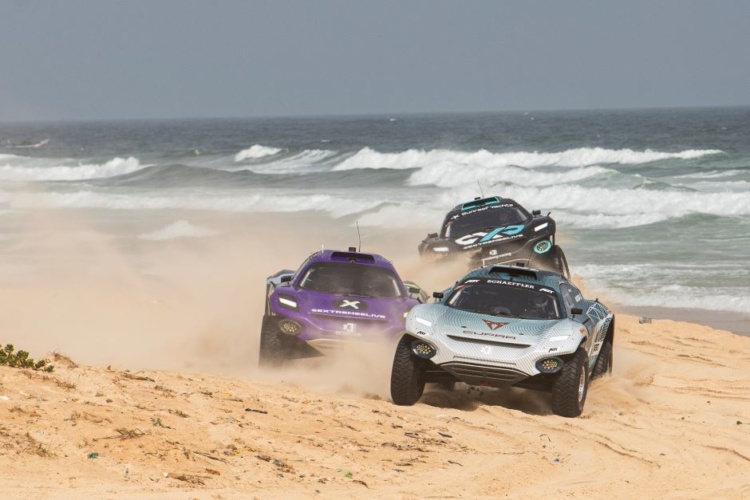
When Formula E was conceived of 10 years ago, it raised no shortage of eyebrows and questions. Would people watch electric cars lapping circuits, devoid of the tell-tale scream of combustion engines? How far would the cars be able to drive on a single charge? Would the batteries be safe? Would any manufacturers want to be involved?
A decade on, and most of those questions have been emphatically answered. The series has gone from strength to strength, attracting growing audiences and many of motorsport’s biggest constructors, while also advancing the frontline of EV technology. Such has been the success, that Alejandro Agag – one of the founders of Formula E – this year launched a new electric series called Extreme E, featuring chunky off-roaders racing head-to-head in some of the world’s wildest and most threatened landscapes.
With an environmental mission at its heart, Extreme E is aiming to use motorsport to highlight the impact that climate change is already having on our planet, drawing the public in with a style of breakneck EV racing that hasn’t been seen before. Needless to say, the cars take a serious degree of punishment, not to mention the batteries that power them. For battery developer Williams Advanced Engineering (WAE), it presented a unique challenge.
“It was in 2019 when the planning was sort of being produced for Extreme E,” Craig Wilson, WAE chief executive, told The Engineer. “I think there were a couple of other companies that they talked to at the time…but we quoted on the supply and it didn’t take very long…as is often the way with Alejandro, if there’s a belief from him that it’s in a credible place then it can be pretty straightforward.”
Agag and WAE had a longstanding relationship, with the latter having stepped in at short notice to deliver the batteries for Formula E back before a single wheel had spun. At the time, there was a lot of scepticism about getting the series off the ground, with battery safety a major concern.
Sometimes you need events, you need a reason for people to tune in and watch and take note Craig Wilson, WAE chief executive
“I think Alejandro’s been quoted on a number of occasions saying that we saved Formula E,” said Wilson. “At the time, there were planes with lithium-ion batteries catching fire and a whole raft of negativity around it, and we were doing a battery for a whole series, all cars same battery.
“So it came about probably as a needs must, and from a Formula E perspective, who could they rely on to deliver this – and really rely on – because all the chips were in on it.”
WAE supplied batteries for the first four seasons of Formula E, with McLaren Applied stepping in for the Gen2 battery. WAE will once again take on the mantle for Gen3, supplying a standardised battery for the series from seasons 9 through 12. All this made WAE an obvious choice for the Extreme E power packs, but the new series is an altogether different beast to its single-seater, city-circuit cousin.
“The main thing is the loads these things are seeing, they’re horrific in terms of G loads and shock loads,” said Wilson. “You’ve got a heavy mass that you have to control and constrain, because it doesn’t need to move very much for something to fail and then you’ve got a car stoppage, or worse even, a fire.
“Some of the environments, the heat and the dust and the sand, those sorts of things you’ve got to take care of as well, whereas in Formula E or circuit racing – even though it might be in city centres – it’s a lot more controlled and there’s a lot more known in terms of what you’re dealing with.”
It’s a point echoed by Australian driver Molly Taylor, who currently leads the Extreme E championship in partnership with Swedish teammate Johan Kristoffersson, both part of the Rosberg X Racing team.
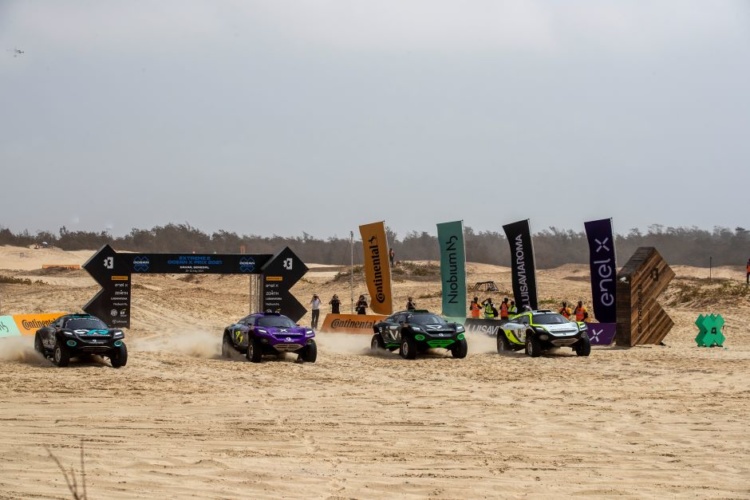
“The batteries from WAE, they have to work in Greenland as well as Saudi Arabia, and all those technologies will certainly pass on down the chain when we’re talking about passenger cars as well,” said Taylor.
Headed by 2016 Formula 1 world champion Nico Rosberg, Rosberg X Racing is locked in battle with team X44, formed by seven-time F1 champion Lewis Hamilton. Driving for X44 is nine-times World Rally Championship winner Sébastien Loeb. You get the picture – there is no shortage of pedigree on display here. Other big hitters involved include Jenson Button, Carlos Sainz and the inaugural W Series world champion Jamie Chadwick, who has had to split her time between Extreme E and defending that title.
Mixing male and female drivers across all teams has been a key point of difference for Extreme E, promoting equality and visibility for women in a sport where it has historically been lacking. It’s just one of many ways the series is attempting to shake things up, alongside the focus on environmental issues and the remote, off-road destinations. Races so far have taken place in Saudi Arabia, Senegal, Greenland and Sardinia, with the final race of the season set for Dorset’s Jurassic Coast in December.
“I’m very excited by this race location – our first event on UK soil,” said Agag, Extreme E’s founder and CEO. “This move is a poignant shift in our mission to race in remote, far-away places to highlight the effects of climate change, as more increasingly, the issues we talk about are literally happening in our backyards so it felt like the right time to bring the spotlight home.”
It’s great to watch, it’s really cool, and that’s an important component of the market perception and the market demand for electric cars Molly Taylor
In between race weekends, the cars and other equipment are transported using the St Helena, a converted Royal Mail cargo-passenger vessel that also serves as a base for climate science. The ship runs on low-sulphur marine diesel and is kitted out with low-energy LED lights, low-water consumption bathroom fittings and even chairs made from recycled plastic bottles.
Each race destination also has a specific legacy project that Extreme E supports, from turtle conservation to mangrove planting. According to Taylor, it’s more than just lip service, with the teams and drivers getting to meet some of the people involved and hear first-hand about the battle lines in the climate struggle.
“We’re really getting involved in the projects, seeing and learning about why they’ve picked the various legacy projects that Extreme E has,” she said. “We’re very hands on with them and trying to understand the philosophy behind them…we’re meeting the locals that are activating and then continuing these programmes longer term.”
On site at race weekends, the ODYSSEY 21 off-roaders recharge using a 40kW hydrogen fuel cell system developed specifically for Extreme E by Surrey-based AFC Energy, with hydrogen harvested using a solar-powered electrolyser. There’s no doubt that Extreme E is doing plenty to show that the environmental credentials of the series are every bit as important as the motorsport and the spectacle.
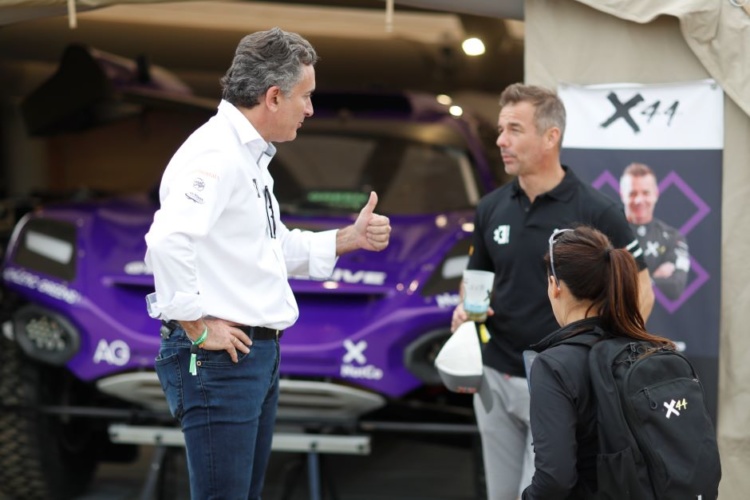
“Hydrogen fuel cell charging in the world of motorsport is truly groundbreaking, and Extreme E is the first event of its kind to utilise this technology,” said Agag.
“The product from AFC Energy offers an end-to-end emission free solution for running our electric vehicles, and I hope it will inspire other organisations to investigate sustainable low emission alternatives when running their events.”
But questions remain about the true level of sustainability a sport on this scale can achieve. Extreme E says it wants to be carbon neutral by the end of its first season, with the 20,000 tonnes of CO2 the series is estimated to produce to be offset via certified programmes. Ultimately, however, Extreme E will be judged not on how close to carbon neutrality it can get, but rather on the impact it has on the climate conversation and exposing a new audience to the threat the planet is facing.
“There’s some real big issues at play,” said WAE’s Wilson. “Sometimes you need events, you need a reason for people to tune in and watch and take note.
“It’s only with global awareness and getting governments and large corporations behind the need to change, that’s how we’re going to help solve some of the issues that are happening.”
Wilson points to the role that Formula E has played in generating cachet for EVs. Motorsport fans are traditionally caricatured as diehard petrolheads, but the electric series has no doubt helped convince at least a few that the future can be fossil-free, even if others insist that the roar of a combustion engine is integral to the whole concept of motorsport.
“My son, at the time, there’s no way he’d be seen dead in an electric car, no way, six or seven years ago,” said Wilson. “Now of course, yes, it’s cool. Some of the most powerful road cars are electric now. And they’re still not to everyone’s taste, but it’s getting there.
“So I think it’s something that can bring awareness of climate change…but you’ve got to keep people tuned in. People aren’t just going to tune in and listen to a climate activist – well some people would – just talking about it.”
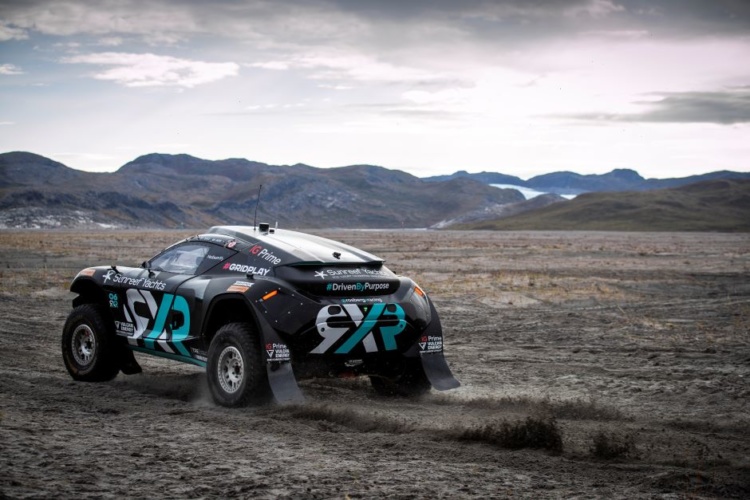
Taylor – who actually gets to throw the 400kw (550bhp), 1,780kg ODYSSEY 21 around the circuits – agrees that the action is key to drawing people in and spreading the environmental message.
“It’s great to watch, it’s really cool, and that’s an important component of the market perception and the market demand for electric cars,” she said. “We want something that’s cool, as well, and Extreme E is showing that you don’t have to compromise all those other factors because it’s electric. We can also make it really really exciting.”
As for the racing itself, it does not disappoint. A sort of mutant mix of Dakar-style rallying and rallycross, it is full-blooded, high-octane action with short, sharp races of two laps around courses a few kilometres in length. In between laps there is a driver switch, with male replacing female or vice versa, depending on team strategy.
One ‘hyperdrive’ is also available to each driver per lap, where a temporary speed boost can be used to gain or defend position, or simply to blast through a fast section of the course. The tracks themselves are only revealed just a few days ahead of racing, however, meaning drivers have to plot their routes and tactics with almost no preparation.
“It’s difficult to do a lot of testing with Extreme E,” said Taylor. “We basically turn up and straight from the get-go we’re in the cars and on the clock.
“We get to see the track on the Thursday afternoon for a track walk and that’s it. Then we’re into it…you look for the next flag and look for the next flag and find the fastest way hopefully between them. So that’s definitely one of the biggest challenges of the series.”
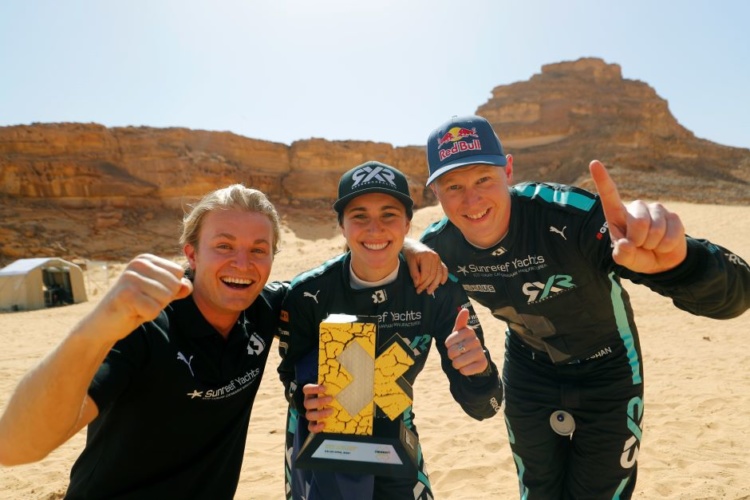
The remote locations and the desire to keep the carbon footprint to a minimum mean that spectators don’t attend the races, with action screened through a combination of Extreme E’s broadcast partners as well as the series’ own website and social channels. The Covid-interrupted first season has seen the race format tweaked as teething problems have been overcome and the cars’ capabilities have become better understood. Season 2 – already confirmed – is likely so see the product refined even further, with the series aiming to shine its environmental spotlight on some of the destinations that were dropped in season 1 due to Covid.
“We probably don’t have the final package yet, but we’re tweaking that and will probably continue to do that in season two,” said Taylor.
“We’ve all been thrown into this adventure together. And I think having that broader purpose behind it all – the sense that everyone in the paddock really wants to be there, not just from a sporting side, but from being able to make a difference – that kind of enthusiasm spills out across the whole paddock.”
Perhaps the biggest legacy Extreme E can deliver will be to put electric mobility front and centre in a way that hasn’t been seen before, showcasing what EVs can do and how far battery technology has come since those early, seat-of-the-pants days of Formula E.
“We’re at the tip of the iceberg with electrification,” said Wilson. “We’re really at the start of a journey and engineering and technology development is going to be really key as to how that’s going to develop and play out over time.
“We have to do something that’s going to reduce our carbon footprint. Telling people to stop using mobility devices isn’t the answer. People aren’t going to do that…so we’re using motorsport to help push boundaries.”
The post Pushing limits and awareness with Extreme E appeared first on The Engineer.


